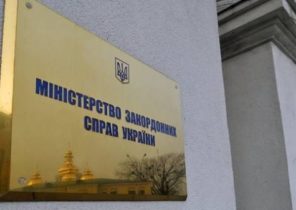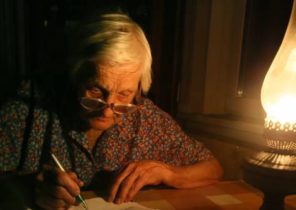
The legendary seaside town of Sebastopol again plays a Central role in the increase of Russian arms.
Hot spot of Crimea
In March 2014, when Russia annexed Crimea, the Peninsula has again placed himself in European history. Three years after those dramatic events Jyllands-Posten back in a hot spot.
This post was published on the front page of “Pravda” on 4 July 1942: “Our army left Sevastopol,” wrote Soviet party newspaper about the evacuation of the seaside town in Crimea.
Like so much else in the daily newspaper, it was a flat out lie.
Because Yes, the leadership of the red Army were deported by plane, even before the final German assault. But 60-80 thousand Soviet soldiers, most of whom were wounded, remained in the city.
“When they left the city, and the situation was terrible, the convoy stretched for 40 kilometers,” — says Ksenia Isaeva from the Museum “the 35th coastal battery”, the impressive exhibition held in the bunkers of the fortress near Sevastopol, which is no longer used for military purposes.
Here in the exhibition — a copy of the message printed in “Pravda”, as well as photographs and documents associated with many of those who gave their lives in the battle for the city that holds a special place in Russian military history.
Sevastopol came under siege, not only during the Second world war, but also during the Crimean war, when Russian opponents were, in particular, the UK and France.
Moscow, Saint Petersburg and much more small compared to them, the Sevastopol is the only city in Russia, having “Federal status” and their mayors report directly to President Vladimir Putin.
When you come out of Museum and back on the surface, convinced that the military presence of Russia on the black sea Peninsula is not just a story.
Hear the sounds of gunfire from the firing range of the Marines, located near the Museum.
All of this is within a military enclave, where great quarter, in which live the military and their families.
And in Sevastopol, on the Crimean highways often come across military vehicles and men in uniform is a sign of increasing armaments on land, on sea and in the air, continuing after the Russian annexation of the Peninsula in 2014.
Russian soldiers became much more
Exact figures talking about the scale of the Russian military presence there: in the analysis conducted by the Foreign policy forum (Ukrainian analytical center), it is argued that the Peninsula is now present in about 60 thousand Russian troops, although neither confirm nor deny this figure is not so easy.
But not to mention greatly increased military activity on the Peninsula and a substantial amount of new equipment that arrived.
The analysis conducted by the Center for the study of security issues at the University of Zurich indicates that in 2014 the black sea fleet has received six new submarines, three frigates and several smaller ships.
“It is fair to note that the Russian forces in the Black sea area is significantly increased,” is the conclusion of analysts.
However, the black sea fleet is still far from what it was during its heyday in the Soviet era, said one of the local officers, who did not want his name appeared in the newspaper: “the Fleet that can be called only with great reservation. Many of the ships in the port of Sevastopol — a pile of rusty metal,” he says.
Force in the Crimea is also strengthened
A large airfield Belbek near Sevastopol is now completely closed to civil aviation. It is reported that two military airfield with a size smaller, mothballed after the collapse of the Soviet Union, now once again accept aircraft.
According to news Agency Reuters, all specifies that Russia also intends to restore the range of Soviet radar stations on mountain tops of Crimea.
“These stations provide an ideal opportunity to observe the Black sea and the countries-NATO members nearby, such as Turkey, Bulgaria and Romania,” wrote Reuters last year.
A nuclear weapon hidden deep in the mountains
A more accurate idea of how much was militarized Crimea in Soviet times, it is possible to obtain approximately 15 km to the South from Sevastopol, in Balaklava, located in a picturesque black sea Bay.
Today in the sun-filled port where many moored yachts worth many millions, walk Russian tourists. But until 1990 the area was completely closed for foreigners and for Russians. Entry here required special permission.
Here, hidden deep in the mountain, is a system of canals, dry docks and workshops, reminiscent of something from a Jules Verne’s novel.
This database was created in the 1950-ies in order to hide the Soviet nuclear submarine, came here for repairs, and for use in case of a major war. All designs here have been strengthened to such an extent that the base could stand a direct nuclear attack of considerable magnitude.
In the early 1990s, the base was closed, and tours of it are today a popular pastime for tourists coming to the South coast of the Crimea.
There are in the Crimea nuclear weapons now or not is unknown.
Russia said earlier that reserves the right to mix nuclear weapons throughout its territory. And although the annexation of the Crimea was recognized only a few of the closest allies of Russia, from Moscow’s point of view the Peninsula is as much a Russian as such is Kaliningrad on the Baltic sea.
According to some military sources in Crimea already placed a number of the latest Russian missile systems, which can be equipped with nuclear weapons.
The Ukrainian side observes the escalation of the arms rather nervously and warns that this escalation may have consequences not only for areas nearby.
“Created a very powerful striking force, and it poses a serious threat not only for Ukraine but for the whole black sea region”, — says Alexei Miller, Director, international security program, the analytical Razumkov center in Kiev.
He, in particular, specifies that the Russian forces in Crimea can operate with Russian-backed rebels in Eastern Ukraine. Kiev fears the creation of communication channels between the two territories.







